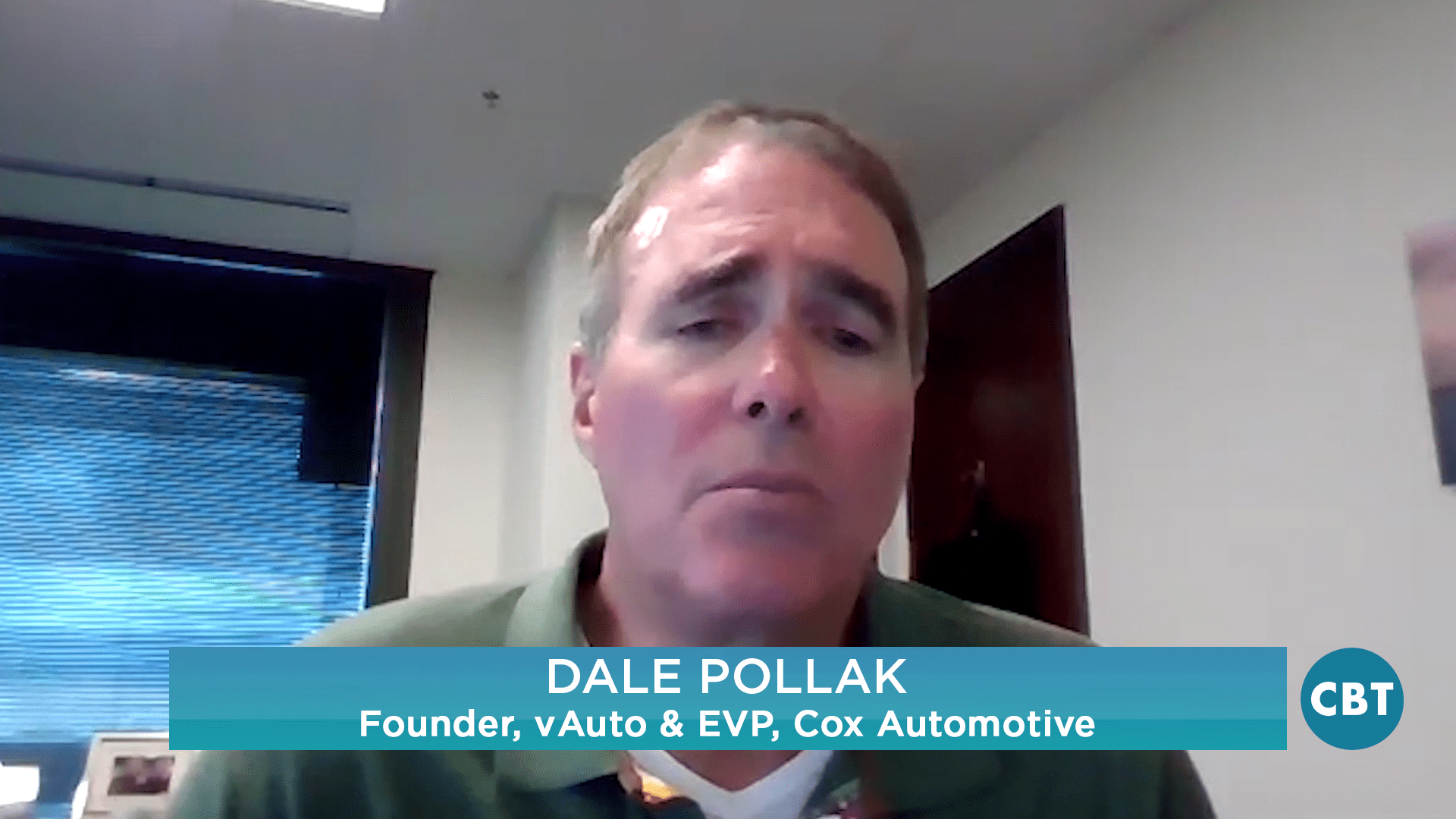On today’s show, we’re pleased to welcome back Dale Pollak, founder of vAuto and Executive Vice President for Cox Automotive, back to CBT News. In this segment, Jim and Dale discussed the importance of managing your dealership’s new inventory in a practical and effective way.
Jim Fitzpatrick: Hi everyone, I’d like to welcome in Mr. Dale Pollak back to CBT news. Dale, we always greatly appreciate you sharing your take on the industry with our viewers. Thanks very much for coming in today.
Dale Pollak: Thanks, Jim, it’s always a pleasure to be with you.
Jim Fitzpatrick: Sure. You recently wrote about new car dealers being in a pickle. Give us some background or context on why new vehicle inventories have risen to such high levels and what caused it.
Dale Pollak: Well, at the root of it all is just simply supply and demand. The manufacturers are tasked with the responsibility of creating a lot of inventory, that’s how they make their money, and of course, the inventory levels are ultimately arbitrage based on the amount of retail demand in the market. And I think it’s well understood that today the new car demand is fairly soft because we’ve put a lot of people in previous years into a lot of new cars and long term financing, and it’s just simply a phase of the cycle where a lot of consumers are just over their head in debt and not in a great trade position. So manufacturers are making cars, and dealers are having trouble selling cars, so it’s a supply and demand issue.
Jim Fitzpatrick: Yeah, for sure. How is this inventory imbalance situation manifesting for the vAuto clients that you speak with?
Dale Pollak: Well, I think it manifests itself fairly equally for all dealers, regardless of what their used vehicle inventory solutions or strategy are. There’s just a lot of cars, we’re in a higher interest rate environment, and the cost of carrying excess inventory today is greater than it’s ever been. What used to be interest rate credits on dealer financial statements has quickly turned into significant interest rate expense. So it definitely calls for a dealer’s attention and some strategies to mitigate this problem.
Jim Fitzpatrick: What can dealers do about the performance and profit slowdown?
Dale Pollak: First and foremost, just as they’ve been well-trained to do with used vehicle inventory, is they need to manage age. Age management in used vehicle inventory is prevalent, but it’s not so present in the new vehicle inventory. And I think if a dealer is not paying a lot of attention to the age and the management of the age of their inventory, they’re missing an opportunity to reduce expense that’s very important.
Jim Fitzpatrick: Do franchise dealers actually have any control to exert over inventory practices and preferences?
Dale Pollak: Well, they do to a certain extent, perhaps some franchises more than others, but dealers have to be good factory partners. It’s important to be a good factory partner, and to a certain extent that means that you have to have some give and take, and sometimes that comes with taking inventory that you might prefer not to take or the market doesn’t really need.
Dale Pollak: But on the other hand, only to a point. I think that dealers can control it, they have to push back when it’s appropriate and in an appropriate and measured manner. But in order to do that, Jim, they really have to have data, and they have to have information that legitimately creates a case for not taking inventory in situations where they’d prefer not to. It’s a data-driven discussion.
Jim Fitzpatrick: This is a great topic, Dale, if you were to summarize your advice for our dealer viewers, what would it be?
Dale Pollak: With respect to managing new vehicle inventory, number one, manage age. Number two, bring some science and data discipline to your ordering process, something that has really lacked in the past. I think it’s pretty well understood by most dealers that the process of ordering new vehicle inventory is a little bit back of the envelope. And that’s okay when inventory is moving fast.
Dale Pollak: But when inventory isn’t moving fast and supply is coming quickly, a dealer really needs to be data-driven in terms of ordering the mix, the equipment, the color combinations that are most desired and fastest moving in the market. So, after managing inventory, I would say that taking a data-driven, disciplined approach to ordering inventory is necessary. And then the third step, as we previously talked about, is to appropriately push back with data and documentation when the factory is simply overreaching and asking for too much.
Jim Fitzpatrick: Yeah, that’s for sure. It’s more important now than ever for dealers to run an efficient operation. We’re hearing the R-word pop up from media now, there may be a recession looming, but now’s the time for dealers to really make sure their house is in order and running as efficiently as possible. And this is one of those areas that needs to be looked at constantly, right?
Dale Pollak: Yeah, absolutely correct. Interest expense is a pretty significant one on the dealer’s financial statement, and it’s more controllable than dealers might think. It’s really not an area that is under current management or control very well across most dealerships. So it’s a significant opportunity for greater efficiency.
Jim Fitzpatrick: Well, Dale Pollak, founder of vAuto, I want to thank you so much for joining us on CBT News today. It’s been very enlightening, and hopefully, we can have you back here shortly to see how things are coming along.
Dale Pollak: Thanks, Jim. It’s always my pleasure.
CBT Automotive Network, the number one most-watched network in retail automotive. This has been a JBF Business Media production.









